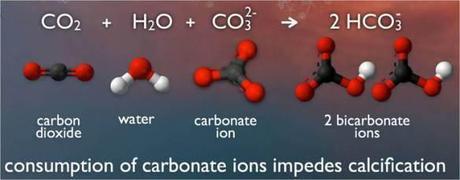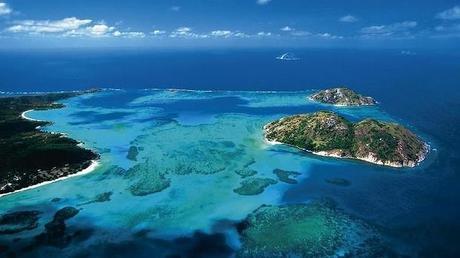As pointed out before, CO2 emissions do more than affect the atmosphere.

Drawing from NOAA PMEL Carbon Program
“When seawater absorbs carbon dioxide (CO2), chemical reactions cut seawater pH, carbonate ion concentration, and saturation states of biologically important calcium carbonate minerals. Calcium carbonate minerals are the building blocks for the skeletons and shells of many marine organisms. In areas where most life now congregates in the ocean, the seawater is supersaturated with calcium carbonate minerals. This means there are abundant building blocks for organisms to build their skeletons and shells. However, continued ocean acidification is causing many parts of the ocean to become unsaturated and some organisms will have difficulty producing and maintaining their shells” (NOAA).
The following article by Andrew Darby focuses on the Great Barrier Reef.
“The skeleton hand of ocean acidification has been found at work near one of Australia’s most exotic tropical destinations, Lizard Island on the Great Barrier Reef.
“Scientists surveying a reef flat just south of the resort island, off Cooktown, have measured a near 40 per cent calcium carbonate decline.”
Read more at “The Age.”

